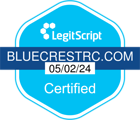The transformation of addiction rehabilitation facilities has been profound, influenced by technological advancements and a shift towards individualized, holistic treatment models. The introduction of teletherapy and remote patient monitoring has revolutionized the landscape, providing more flexible, accessible treatment modalities tailored to the distinct needs of those seeking recovery. How has this evolution impacted the efficacy and reach of addiction treatment, and what does it signal for the future of rehabilitation facilities? Let us commence an exploration of these compelling insights and trends.
Understanding Addiction: A Historical Perspective
Throughout history, the understanding and perception of addiction have undergone a radical transformation, reflecting societal attitudes and medical advancements over the centuries. Initially, addiction was viewed as a moral failing, necessitating religious interventions to restore the individual’s moral compass. Churches played a pivotal role in enforcing societal norms, often offering prayer-based treatments to cleanse the soul of the so-called ‘afflicted.’
In the 18th and 19th centuries, a shift occurred from moralistic views towards a more social perspective with the advent of mutual aid societies like the Washingtonians. The influence of peer support became evident, presenting addiction as a common struggle that could be overcome with collective strength and resilience. These societies emphasized shared experiences and the power of camaraderie in overcoming addiction, marking a significant departure from previous religious-focused interventions.
However, these historic approaches often lacked a holistic understanding of addiction, focusing more on symptoms rather than underlying causes. This gap in knowledge and treatment methodologies underscores the necessity for continuous research and development in addiction studies, a topic that continues to evolve in the modern era.
The Shift in Society’s Perception of Addiction
As we progress through the timeline of addiction rehab facilities, we witness a significant shift in society’s perception of addiction.
The transformation of understanding addiction as a disease rather than a moral failing has been a pivotal turning point.
It has paved the way for stigma reduction efforts and substantial progress in addiction treatment methods, reflecting a more compassionate and informed society.
Understanding Addiction as a Disease
Shifting societal attitudes have begun to frame addiction not as a moral failing but as a complex disease, prompting a paradigmatic shift in how we approach treatment and recovery. This view, known as the disease model, is not without criticism, but it has undeniably had profound impacts on the evolution of addiction rehab facilities.
The disease model posits that addiction is a chronic brain disorder influenced by genetic factors rather than a mere result of poor personal choices. Critics argue that this model might absolve individuals from taking personal responsibility for their actions. However, a growing body of research supports the notion that genetic factors influence susceptibility to addiction, thereby adding credence to the disease model.
Understanding addiction as a disease has necessitated a more compassionate, patient-centric approach to treatment. It has led to the development of innovative therapies targeting the underlying neurobiological mechanisms of addiction. This shift in perception and the subsequent evolution of treatment strategies mark a significant stride in the battle against addiction and its devastating consequences.
Stigma Reduction Efforts
In parallel with the evolution of addiction treatment approaches, significant strides have been made in reducing the societal stigma associated with addiction, marking a pivotal shift in perception towards this complex disease. This shift is partly due to the tireless efforts of organizations and individuals advocating for a more compassionate, understanding view of addiction.
Stigma measurement tools have been instrumental in tracking changes in societal attitudes, providing necessary data to guide targeted interventions. They have revealed a promising decrease in negative perceptions and highlight areas where work is still needed.
A key aspect of these efforts is the use of public awareness campaigns. Such campaigns use a myriad of platforms, including social media, television, and public events, to disseminate accurate information about addiction and to humanize those affected by it.
The goal of these campaigns is not merely to inform but to challenge entrenched beliefs, stimulate discussions, and ultimately reshape societal attitudes. By doing so, they help create a society where individuals struggling with addiction are met with empathy and support rather than judgment and ostracization. This shift in perception is crucial to fostering an environment conducive to recovery and reintegration.
Addiction Treatment Progress
Certainly, the evolution in society’s perception of addiction has been crucial in the progress of addiction treatment methods and approaches. This shift in perspective from viewing addiction as a moral failing to understanding it as a chronic disease has led to significant advancements, largely facilitated by increased rehabilitation funding.
The infusion of funds has catalyzed the development of innovative, patient-centered treatment models that consider the complexities of addiction. It has also seen the rise of recovery communities. These are not just physical spaces but a network of individuals committed to battling addiction, offering peer support, and promoting long-term recovery.
These communities have become integral to the treatment process, providing emotional support and practical resources, thereby amplifying the impact of professional treatment. They have also played a crucial role in reducing the stigma around addiction, further encouraging individuals to seek help.
In essence, the shift in society’s perception of addiction, boosted by rehabilitation funding and the establishment of recovery communities, has fostered a more inclusive and effective approach to addiction treatment. This progress underscores the importance of continued investment and societal support in the fight against addiction.
The Emergence of Holistic Treatment Approaches
Holistic treatment approaches, emphasizing the interconnectedness of mind, body, and spirit, have begun to reshape the landscape of addiction rehab facilities, offering a thorough path toward recovery. Recognizing the importance of holistic nutrition, these facilities integrate dietary changes to address biochemical imbalances that may contribute to addiction. A balanced diet, rich in essential nutrients, can boost mood, enhance energy levels, and strengthen the immune system, aiding recovery.
Additionally, the incorporation of yoga therapy benefits the recovery process greatly. Yoga, by promoting mindfulness, can help individuals manage their cravings and reduce stress levels, both directly influencing relapse rates. Furthermore, its physical aspects can improve overall health and fitness, aiding in the detoxification process.
In essence, the emergence of holistic treatment approaches reflects a shift in understanding addiction not merely as a physical dependency but as a complex interplay of physical, emotional, and spiritual dimensions of an individual. These innovative methods offer hope for a more thorough recovery, addressing the root causes of addiction and equipping individuals with the tools to maintain long-term sobriety. This evolution signifies a promising stride in the journey toward effective addiction treatments.
Technological Innovations in Addiction Treatment
While the holistic approach has greatly influenced the domain of addiction treatment, the advent of technological innovations has further revolutionized the strategies employed in these facilities.
The introduction of Virtual Reality Therapy (VRT) and Telehealth Services has triggered a paradigm shift in the way addiction is managed, making treatments more accessible and increasingly crucial.
Virtual Reality Therapy, an immersive technology, holds immense promise in addiction treatment. This innovative approach allows patients to confront their addiction in a controlled virtual environment, aiding in the development of coping mechanisms that can be transferred to real-world situations. This technology-enhanced exposure therapy has shown significant potential in reducing cravings and preventing relapses.
Alongside VRT, telehealth services have emerged as an essential tool for providing remote addiction treatment. This digital platform enables healthcare providers to offer counseling and therapy sessions to patients who may not have easy access to in-person services. With the convenience of real-time, remote interactions, Telehealth Services break down geographic barriers, making addiction treatment more accessible to individuals in remote areas.
These technological advancements are shaping the future of addiction treatment, promising more personalized and effective strategies.
The Role of Personalized Treatment Plans
In the field of addiction rehabilitation, the implementation of personalized treatment plans is proving to be a game changer in enhancing the efficacy of recovery strategies. These tailored approaches go beyond addressing the mere symptoms of addiction, delving into the unique genetic influences, individual resilience, psychological factors, and socio-environmental conditions that shape each patient’s struggle with substance abuse.
1. Genetic influences: Personalized treatment plans consider the role of genetics in addiction, recognizing that certain genetic predispositions can increase susceptibility to substance abuse and influence response to treatment.
2. Individual resilience: The capacity to cope with stress and adversity, known as individual resilience, is an essential factor in recovery. Customized treatment plans factor in this resilience, helping individuals build on their strengths and develop effective coping mechanisms.
3. Holistic focus: By taking into account all aspects of a patient’s life, including their physical health, mental health, relationships, and environment, personalized treatment plans provide a thorough approach to addiction recovery, which enhances the chances of long-term success.
In essence, the growth in the adoption of personalized treatment plans reflects a shift towards a more thorough, patient-centered approach in addiction rehabilitation. This approach acknowledges the complexity of addiction and the multifaceted nature of recovery, leading to more effective and lasting treatment outcomes.
The Increasing Prevalence of Dual Diagnosis
As the landscape of addiction rehab evolves, the prominence of dual diagnosis – the co-occurrence of mental health disorders and substance use disorders – is becoming increasingly evident. The rise of dual diagnosis has presented significant co-morbidity challenges. It demands a more thorough, integrated approach to treatment, necessitating the formation of therapeutic alliances across multiple disciplines.
The complexity of dual diagnosis requires a nuanced understanding of the interplay between mental health disorders and substance abuse. Professionals must navigate the labyrinthine journey of treating both conditions concurrently, as neglecting one can exacerbate the other, creating a vicious cycle.
Therapeutic alliances play an essential role in this regard. Collaboration between psychiatrists, psychologists, addiction counselors, and other healthcare professionals ensures the delivery of holistic care. It also facilitates the sharing of expertise and resources, enabling a more effective response to the multifaceted needs of dual-diagnosis patients.
However, the growing prevalence of dual diagnosis also underscores the importance of early intervention and preventative measures. Addressing mental health issues before they spiral into substance abuse is crucial. Concurrently, substance abuse treatments must also incorporate mental health strategies to prevent a cycle of addiction and relapse.
The rise of dual diagnosis is guiding the future of addiction rehab towards a more integrated, holistic approach.
The Impact of Legislation on Rehab Facilities
The interplay between legislation and addiction rehabilitation facilities is a pivotal aspect of their evolution. Legislative measures, ranging from health policies to legal changes, have greatly shaped the operational landscape of these facilities.
An analytical exploration of these dynamics reveals the profound influence of law on the treatment services and the overall efficacy of rehab centers.
Government Policies and Rehab
Over time, legislation has imposed a substantial influence on the operation and effectiveness of addiction rehab facilities, shaping the course of treatment strategies and the resources available to patients. It’s a delicate dance between policy enforcement and funding allocation, where the government’s role is pivotal in molding the landscape of addiction rehab facilities.
1. Policy enforcement:
The introduction and enforcement of policies determine the accepted practices within rehab facilities. These policies may address issues such as the use of medication, staffing ratios, or facility standards, all of which have direct implications on the quality of service provided.
2. Funding allocation:
The amount and distribution of funds also significantly impact rehab facilities. Funding can dictate the accessibility and affordability of these facilities, potentially deciding who can receive help.
3. Legislation:
Policies and funding are typically driven by legislation, which can either facilitate or hinder the operations of rehab facilities depending on its nature.
In essence, government policies and rehab are intertwined. The direction and effectiveness of rehab facilities are often a reflection of the government’s priorities and commitment towards addressing addiction. This connection underscores the need for thoughtfully crafted policies and ample funding, to make sure that rehab facilities can fully serve those battling addiction.
Legal Changes: Rehab Impact
Understanding the intricate web of legislation, it becomes apparent how legal changes can dramatically shape the landscape of addiction rehab facilities, either propelling them toward growth and development or imposing significant barriers to their progress.
Changes in legislation can greatly impact rehab funding sources. For instance, laws that increase public health spending can expand the available resources for rehab facilities, thereby enabling them to improve their services and reach more individuals in need. However, budget cuts or shifts in funding priorities can have the opposite effect, potentially forcing facilities to reduce their services or even close their doors.
Insurance coverage changes are another legal aspect with substantial implications for rehab facilities. Laws that broaden insurance coverage for addiction treatment can stimulate demand for rehab services, leading to the growth and expansion of facilities. Conversely, legislation that restricts coverage can limit individuals’ access to treatment, potentially leading to a decline in the number of operating rehab facilities.
In both scenarios, the role of legislation is pivotal. It can either enhance or hinder the evolution of addiction rehab facilities, serving as a powerful instrument for shaping the future of this vital sector of public health.
The Rise of Outpatient and Remote Rehab
In recent years, we have witnessed a notable shift in the landscape of addiction rehab facilities with the emergence of outpatient and remote rehab options. This evolution primarily results from the increasing demand for flexible, personalized, and cost-effective treatment methods.
Outpatient rehab benefits are numerous and contribute greatly to its rising popularity. Here are the top three:
1. Essential: Outpatient care accommodates the patients’ schedules, allowing them to maintain their regular responsibilities while undergoing treatment.
2. Guarantee: This model is often more affordable than traditional inpatient rehab, making it accessible to a wider population.
3. Support system: It provides an opportunity to strengthen relationships with family and friends who can contribute positively to recovery.
However, with remote rehab, certain challenges arise. These include potential distractions at home, limited immediate professional support, and the need for self-discipline in following the treatment plan. But with the advancement in technology, these challenges are being steadily mitigated, making remote rehab a viable option for many.
As we continue to explore these innovative rehab models, it is essential to balance the benefits with the challenges to ensure effective, individualized treatment for patients battling addiction.
Future Predictions: Evolving Rehab Facility Trends
As we pivot to the future of addiction rehab facilities, several emerging trends are poised to redefine this landscape. Advancements in technology are playing an increasingly crucial role in addiction treatment, promising unprecedented opportunities for detection, prevention, and recovery.
Concurrently, the rise of holistic approaches and personalized rehab programs underscores a shift towards inclusive, patient-centered care, highlighting the industry’s commitment to addressing addiction’s multifaceted nature.
Technology in Addiction Treatment
Harnessing the power of technology, addiction rehab facilities are poised to undergo substantial transformations in the near future, potentially revolutionizing treatment methodologies and patient experiences. Importantly, virtual reality therapy and digital detoxification are emerging as promising technological interventions that could reshape the landscape of addiction treatment.
Virtual Reality Therapy (VRT) is a cutting-edge technique that employs immersive, computer-generated environments to simulate real-life situations. This technology allows therapists to expose patients to triggers in a controlled setting, thereby helping them develop coping mechanisms.
Digital detoxification, on the other hand, involves helping patients disconnect from digital devices to promote healthier habits and reduce dependency on technology, which can be a source of addictive behaviors.
Advancements in technology are likely to catalyze three main trends in addiction rehab facilities:
1. Individualized Treatment Plans: Customized, data-driven treatment plans based on patients’ unique needs and responses to therapies.
2. Remote Patient Monitoring: Real-time tracking of patients’ progress and immediate intervention during relapses using wearable tech and mobile apps.
3. Teletherapy: Virtual counseling sessions enable patients to receive treatment from the comfort of their homes.
These technological innovations hold the potential to significantly enhance addiction treatment, offering hope for a future free of dependency.
Holistic Approaches on Rise
Shifting paradigms in addiction treatment are increasingly emphasizing holistic approaches, aiming to treat the whole person rather than merely addressing the symptoms of addiction. This trend reflects an understanding that addiction is a complex condition with physical, mental, and emotional aspects, necessitating a well-rounded response.
Alternative therapies are at the forefront of this holistic movement. From acupuncture and yoga to art and music therapy, these non-traditional interventions offer unique avenues for healing. They work by engaging different senses and stimulating diverse neural pathways, which can foster resilience, reduce stress, and support recovery.
Mindfulness techniques are another growing aspect of holistic care in addiction treatment. These methods, which focus on cultivating awareness and acceptance of present-moment experiences, can help those in recovery manage cravings, reduce relapse risk, and improve mental health.
In the future, we can expect to see an even greater emphasis on these holistic strategies in rehab facilities. As research continues to validate their efficacy, they will likely become a more integral part of treatment programs.
This shift towards a more all-encompassing, individual-oriented approach is not just a trend but a necessary evolution in the field of addiction treatment.
Personalized Rehab Programs Future
Building on the foundation of holistic treatment, the future of addiction rehab facilities is forecasted to be greatly shaped by the advent of personalized rehab programs. These programs, underpinned by advanced scientific research, are poised to revolutionize the treatment approach by taking into account specific genetic factors.
Genetic Factors Consideration: Leveraging advancements in genomics, rehab facilities are likely to integrate genetic testing into their treatment plans. This could enable them to tailor interventions based on an individual’s genetic predisposition to addiction, thereby increasing the treatment’s effectiveness.
Rehab Facilities Design: The design of rehab facilities will also evolve to support these personalized programs. Facilities could include advanced diagnostics labs, private spaces for personalized therapy, and environments designed to foster holistic healing.
Data-Driven Therapies: Future rehab programs may leverage big data and AI to predict relapse risks, determine the best treatment plans, and monitor patient progress in real time.
The Influence of COVID-19 on Rehab Services
The COVID-19 pandemic has exerted a profound impact on addiction rehab services, reshaping their operational frameworks and challenging the traditional approaches to treatment delivery. The onset of the pandemic led to a surge in pandemic-induced relapses as isolation, fear, and stress became triggers for many individuals with substance use disorders. This, coupled with the abrupt closure of many rehab facilities, created an environment conducive to relapses.
Simultaneously, the pandemic highlighted the importance of telehealth as a critical tool in delivering rehab services. However, telehealth barriers arose, hindering the smooth shift to virtual treatment. These included a lack of digital literacy among some patients, privacy concerns, and technical issues. Moreover, the impersonal nature of virtual interactions proved inadequate for some patients who relied heavily on the personal connection and support that in-person therapy offers.
The influence of COVID-19 on rehab services has been significant, necessitating a rethink of traditional treatment models. As we continue to navigate the pandemic, it becomes clear that rehab facilities must adapt, striking a balance between virtual and in-person treatment, to effectively manage addiction in these challenging times.

Final Thoughts
The evolution of addiction rehab facilities signifies a progressive shift toward embracing technology and individualized treatment plans, enhancing the accessibility and flexibility of services.
With the rise of outpatient and remote rehab driven by the pandemic, future trends predict a further transformation in service delivery.
Hence, understanding these shifts is vital to promoting effective, diverse, and responsive addiction treatment strategies that cater to an individual’s unique needs, ultimately revolutionizing the domain of addiction recovery.
If you or a loved one is grappling with addiction, remember that you don’t have to navigate this journey alone. BlueCrest Recovery is here to provide the help and support needed to move from the acknowledgment of powerlessness to a place of strength and healing. Do not hesitate to reach out to our team online or call today. Let our team guide you on your journey to recovery.
Frequently Asked Questions
What are the measures taken to ensure patient confidentiality in addiction rehab facilities?
Addiction rehab facilities utilize digital security measures to guarantee patient confidentiality. They have stringent protocols to prevent confidentiality breaches, including secure databases, encryption, and strict staff training on information handling and privacy laws.
How Are Rehab Facilities Regulated and Accredited?
Rehab facilities are governed by strict regulations for staff training and facility infrastructure. Accreditation is granted by bodies like CARF and JCAHO, ensuring facilities meet standards for patient care and safety procedures.
What Is the Average Cost of Treatment in Addiction Rehab Facilities?
The average cost of treatment in addiction rehab facilities varies greatly based on factors such as length of stay and services provided. Insurance coverage and financing options greatly influence patients’ out-of-pocket expenses.
Are There Specialized Rehab Facilities for Adolescents and Elderly Populations?
Yes, specialized addiction rehab facilities exist for adolescents and elderly populations. These cater to unique needs such as adolescent stigma and elderly reluctance, ensuring effective, age-specific treatments that address these distinctive barriers to recovery.
How Do Rehab Facilities Address the Cultural and Linguistic Needs of Diverse Patient Populations?
Rehab facilities increasingly employ cultural sensitivity training and linguistic accessibility improvements to address diverse patient needs. These strategies foster inclusive environments, enabling effective communication and understanding of culturally nuanced addiction experiences.


















